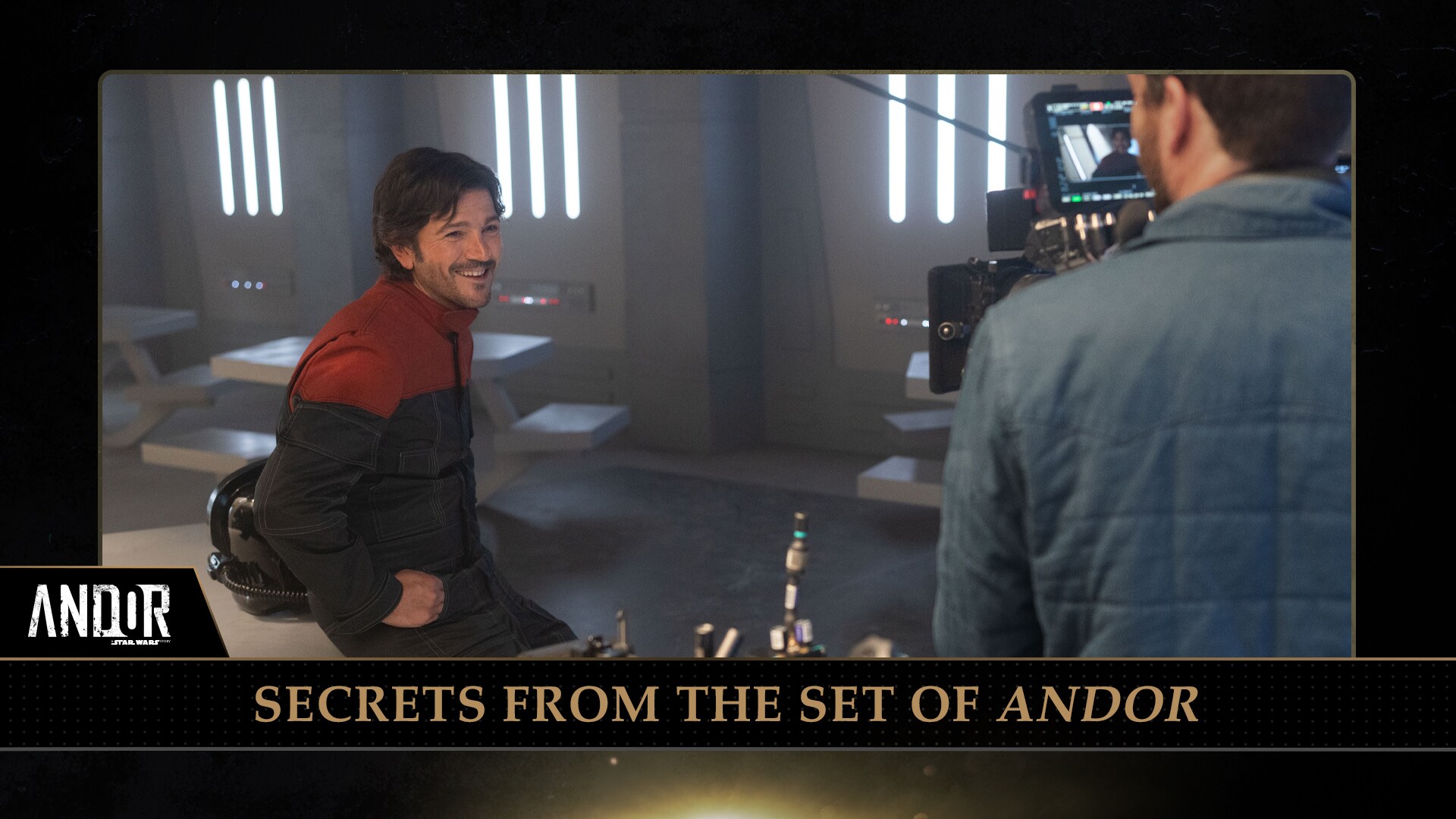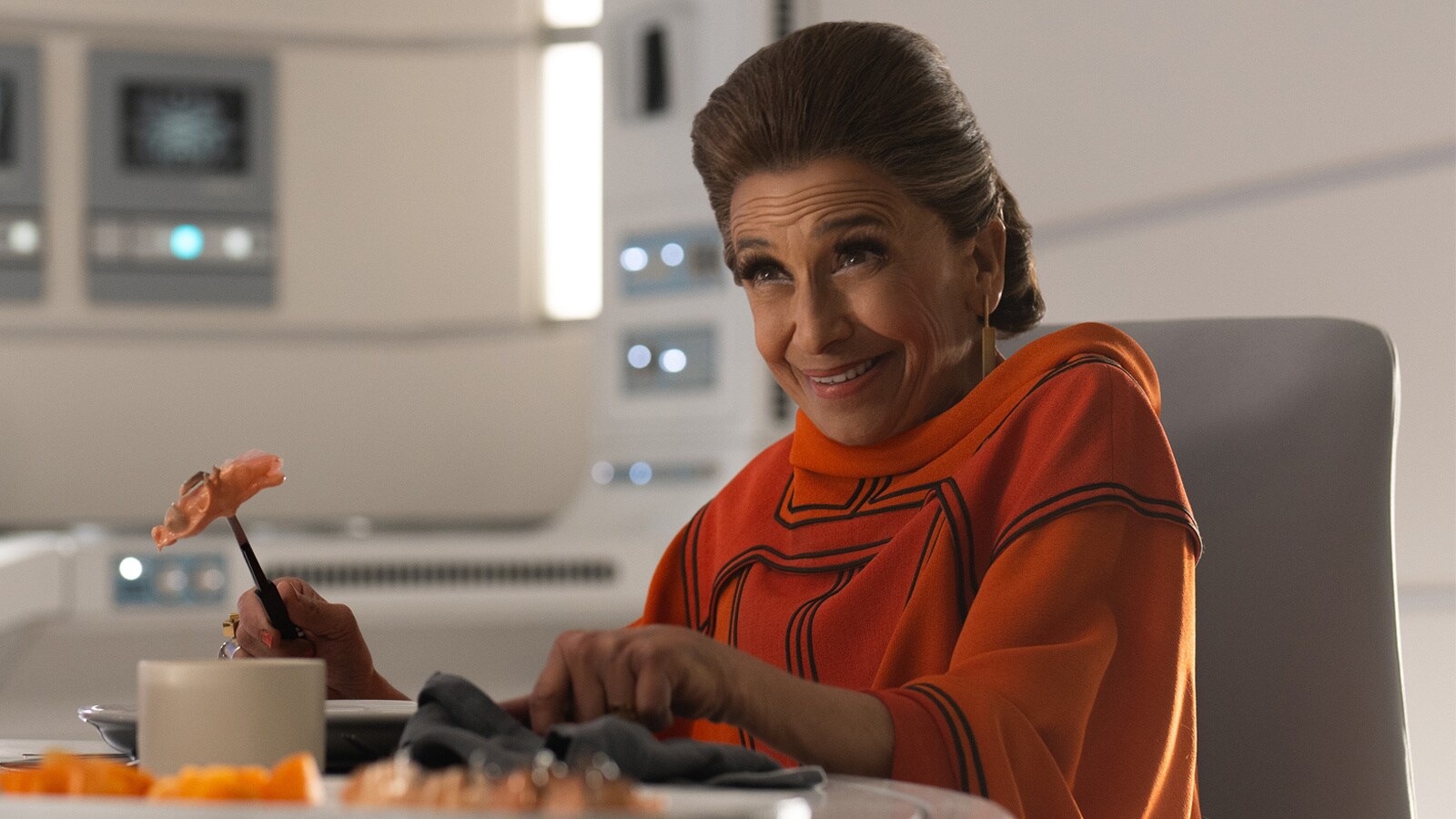As Andor’s first season arrived on Disney+ in the fall of 2022, the production team was already hard at work on the second. Production designer Luke Hull understood from the beginning that Season 2 would be another set-intensive undertaking, and his team made sure to schedule even more preparation time than they’d used before. “It's born out of story and character and on what's on the page,” he explains about their approach to Andor’s grounded sense of design and construction. “It's about finding a tone that feels right for the story that we want to tell. [Creator and executive producer Tony Gilroy’s] approach has always been like each three episodes is a movie. You're trying to hit that cinematic look that is intrinsic to Star Wars.”
“We covered a lot of ground in Season 1,” notes Tony Gilroy. “We did Ferrix and Aldhani, and we did Narkina 5, and we did some Coruscant. And it felt pretty expansive, but we're gonna go bigger.”
“With all the success of Season 1, there's just obviously been an appetite to sort of dial it up for Season 2,” adds Industrial Light & Magic (ILM) production visual effects supervisor Mohen Leo. “So much of the original team from Season 1 has come back…. Season 2 is definitely more ambitious in terms of showing more…unique locations [and] going to more places.”
Andor Season 2 sports a diverse array of locations involving practical set design, prop creation, and extensive visual effects. Some places we’ve visited before but now pack new surprises; another, known only by name, has been depicted for the first time; still more are entirely new. Let’s dive into some of the locations and worlds seen in the series so far, including D'Qar, Ghorman, Yavin 4, Chandrila, and Mina-Rau.
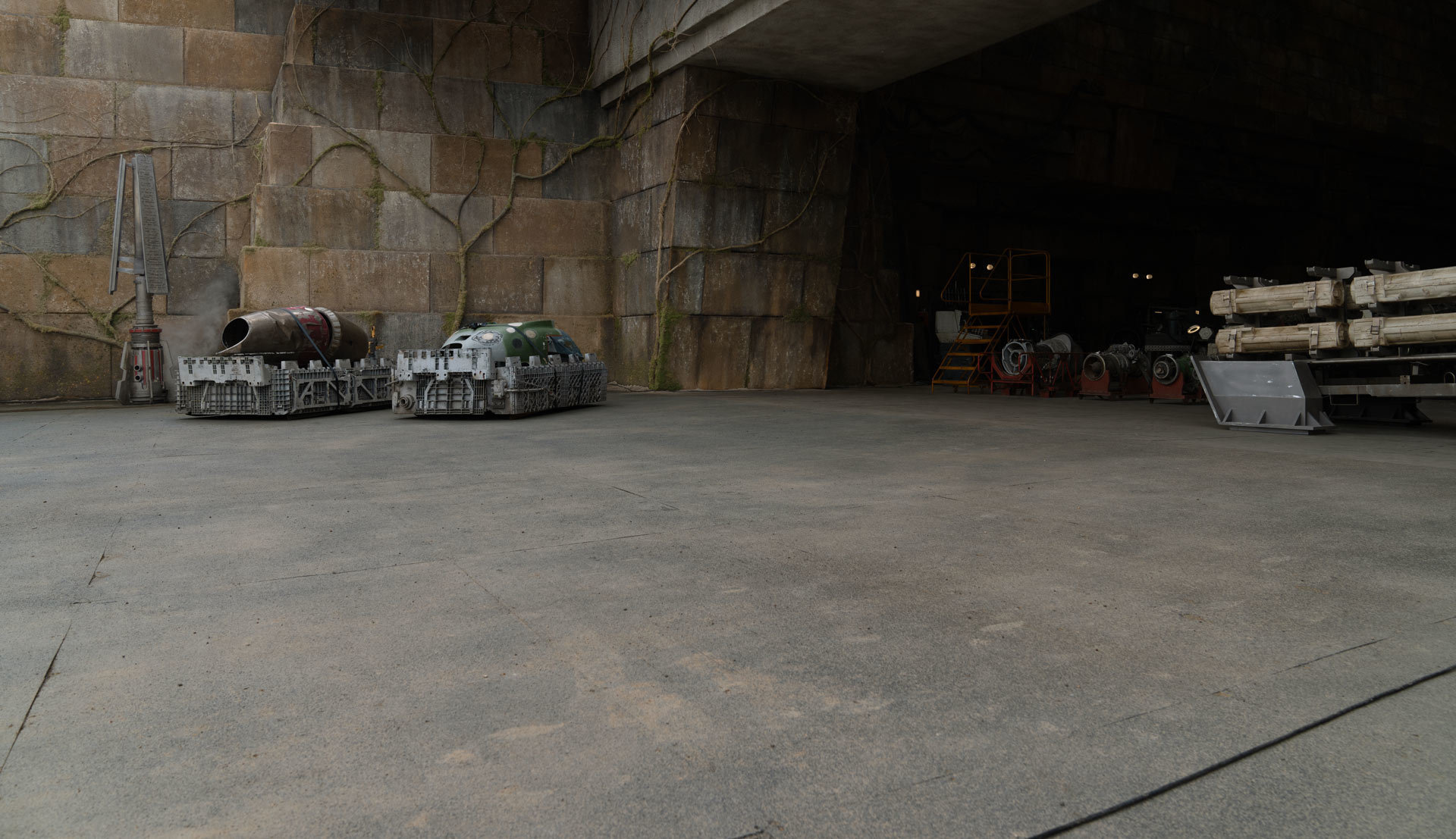
Yavin becomes a basecamp.
Andor Season 2’s third arc of episodes — each directed by Janus Metz and written by Dan Gilroy – take us back to Ghorman, Coruscant, as well as the formerly anonymous jungle world that is revealed to be Yavin 4. This ultimate site of the Rebel Alliance headquarters is first glimpsed in Star Wars: A New Hope (1977), we now see the earliest days of Yavin’s establishment as such a base. Elements of this location had been constructed as a large set not once but twice before for A New Hope and Rogue One: A Star Wars Story (2016).

Because the Palmo sets for Ghorman occupied most, if not all, of Lucasfilm’s backlot space at Pinewood Studios, the production utilized Longcross Studios in Surrey to construct aspects of Yavin’s temple and surrounding area. “What was nice about that is that we had the space to go straight out onto the skid pan as this sort of landing field and up into the village and then off into the jungle,” explains production designer Luke Hull. So it all connected if you wanted to shoot in-camera. We had various other sets dotted around the forest there. We had two stages at Longcross as well, which we constantly were turning around.”
ILM visual effects supervisor Mohen Leo adds that “when we first see the Rebel base in episode seven, it's still under construction. And so there's a big story point…to quickly establish that the rebels are still in the process of moving in. So we are working on these sequences with [visual effects vendor studio] Scanline and they did some really nice work in the aerial shots, sort of showing that there's some deforestation going on. They're trying to clear some of the jungle to build the airfield. Some of the airfield is still under construction and there are fewer ships and fewer people.”
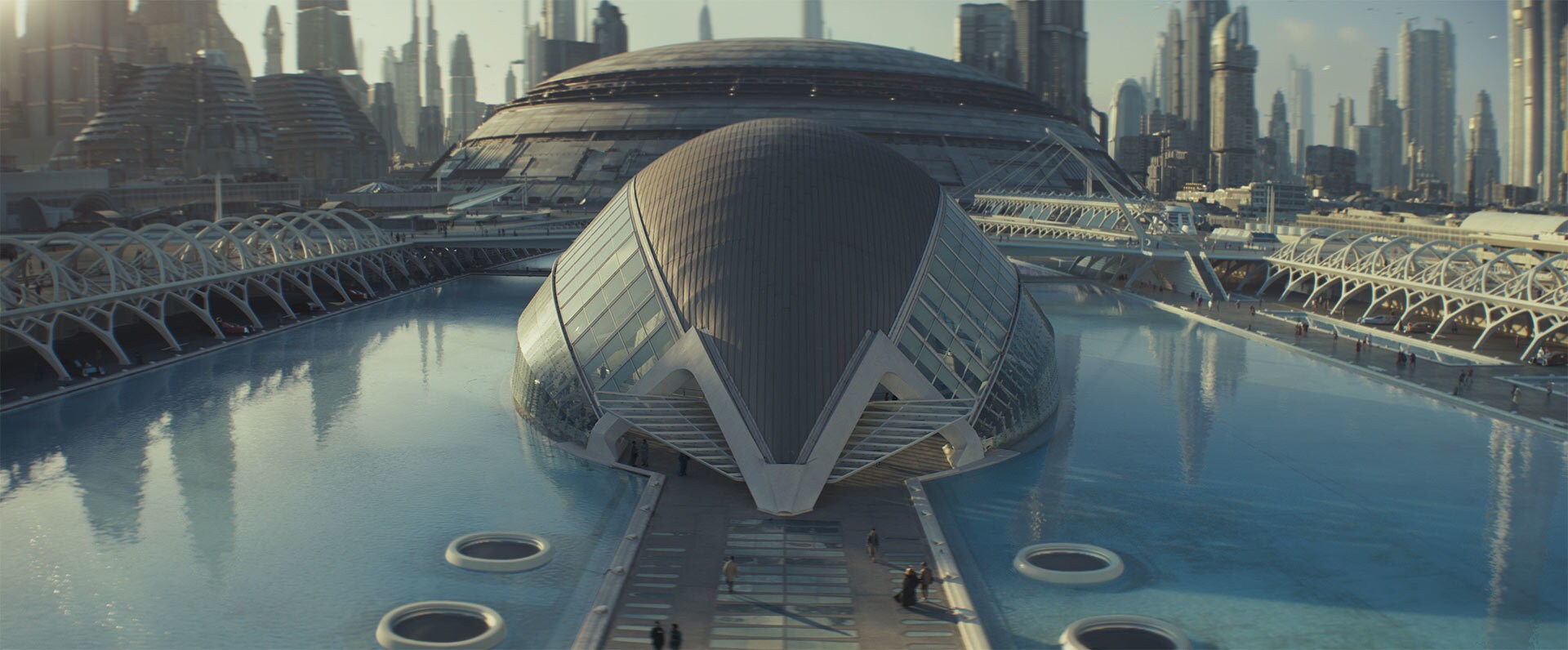
Finding Coruscant in Spain.
Going back to the 1980s, Spain has appeared in a handful of Lucasfilm productions, including Indiana Jones and the Last Crusade (1989), The Adventures of Young Indiana Jones (1992-96), and Star Wars: Attack of the Clones (2002). Andor returned to the Iberian peninsula not only to shoot the mountain ranges of Chandrila, but significant parts of Coruscant as well. Valencia’s iconic “City of Arts and Sciences” complex was utilized for a number of locations in the planet’s Senate District.
“There's this architect Santiago Calatrava who built all these extravagantly crazy buildings around the world,” explains Andor’s creator and executive producer Tony Gilroy. “And he built this wild complex, an entertainment complex in Valencia. We need things that are here around us that are real. And then we can do set extensions and we can build things out. But we use the real, everything is real up front.”
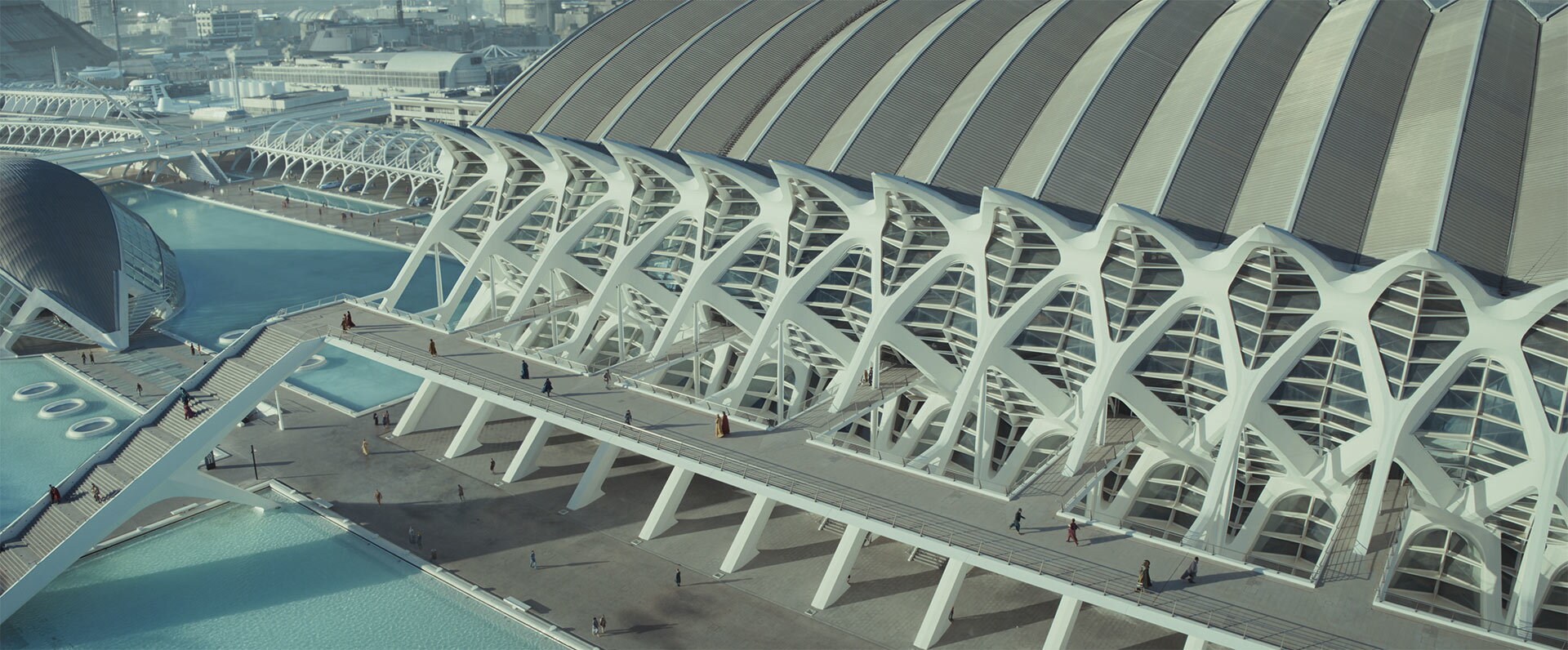
“It’s this huge complex of museums and event spaces,” according to Leo. “It's just fantastic [because] sometimes you go to locations where there's only one angle that works, and…we're going to have to shoot in this direction. With this location in Valencia, you could just walk around in every corner of it, [and it] looked like Coruscant. We ended up shooting so much and it perfectly meshed into our whole approach of trying to ground everything in locations, and then just enhance and augment them. So this location specifically really felt very upscale and formal in a way that you could believe that this could be government offices.”
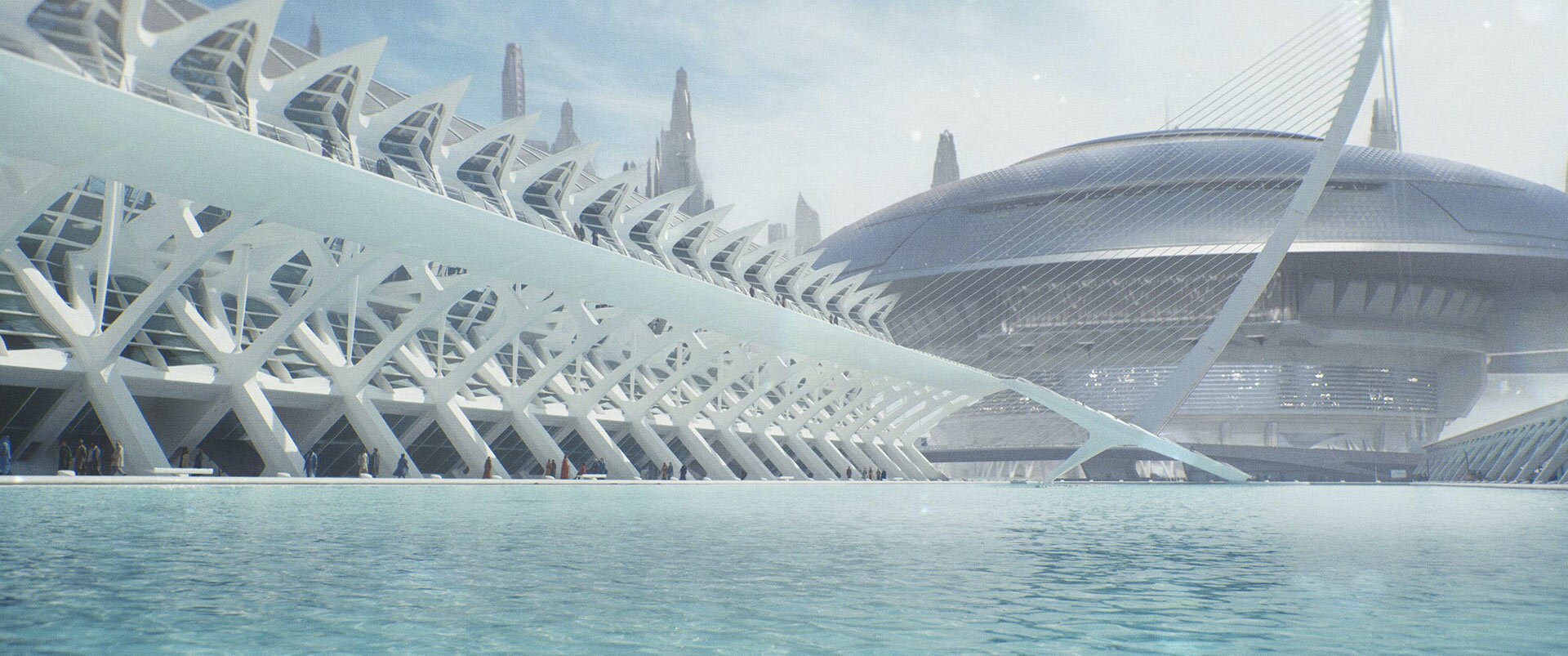
Making the Senate familiar but different.
Sporting a number of cultural institutions and scenic walkways, the City of Arts and Sciences became the practical setting for much of the Imperial Senate facilities. As Hull explains, a major priority for Andor Season 2 was to determine how best to portray the Senate, a location firmly established in the Star Wars prequel trilogy. Starting with the basic architectural framework of the earlier films, the Andor team then made certain revisions to reflect the change in regime.
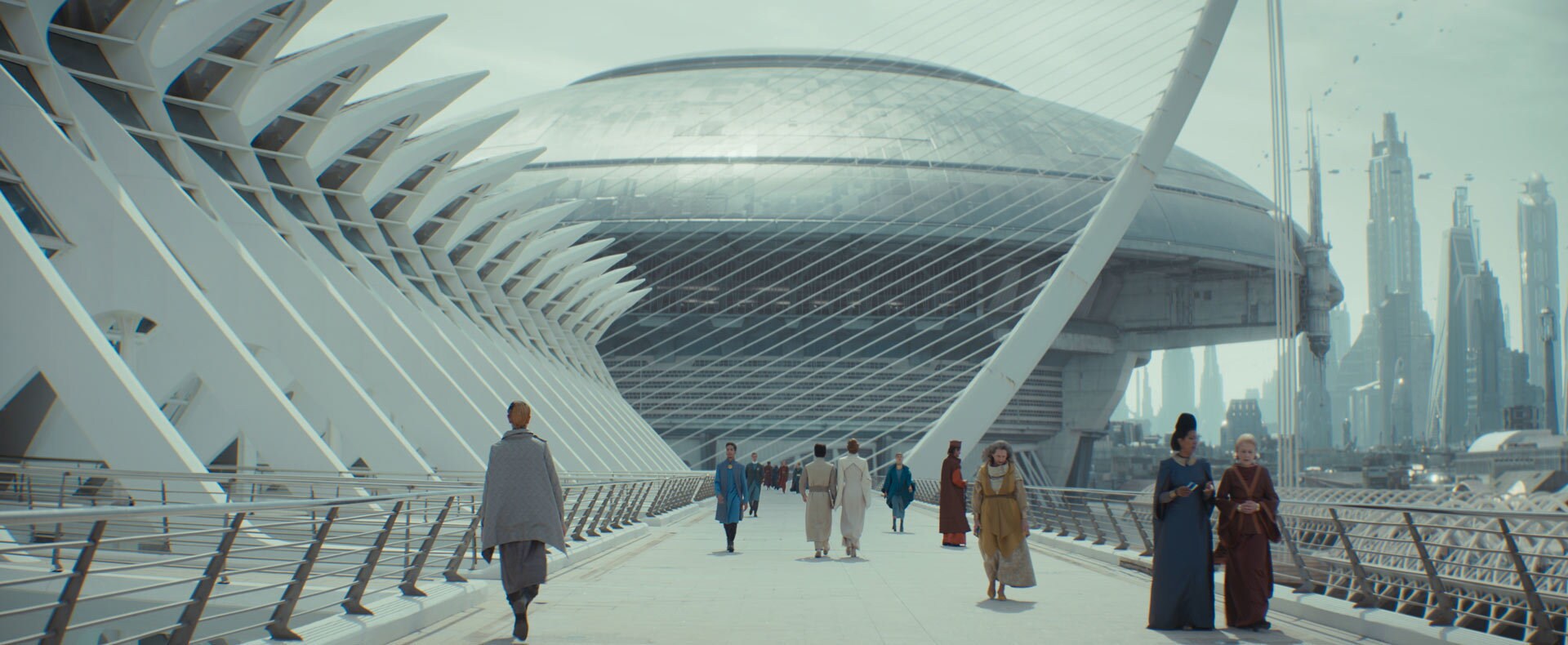
“How we sort of ‘modernize’ it might be the wrong word,” Hull says, “but how we sort of bring it into the aesthetic texture of our show. And always felt strongly that in order to do that you need a location with scale so there's a basis for that. So that's what Valencia really gave us. And this sort of mapped out how we would create the Senate buildings off of our location, which formed our plaza right up front. We worked early on with Mohen and [ILM visual effects producer] TJ [Falls] to map out what that would look like…. Then from within that we build a whole journey of the plaza through into the senate, all the way up to Mon Mothma’s (Genevieve O’Reilly) pod through a combination of [studio] set pieces and sets on location as well.”

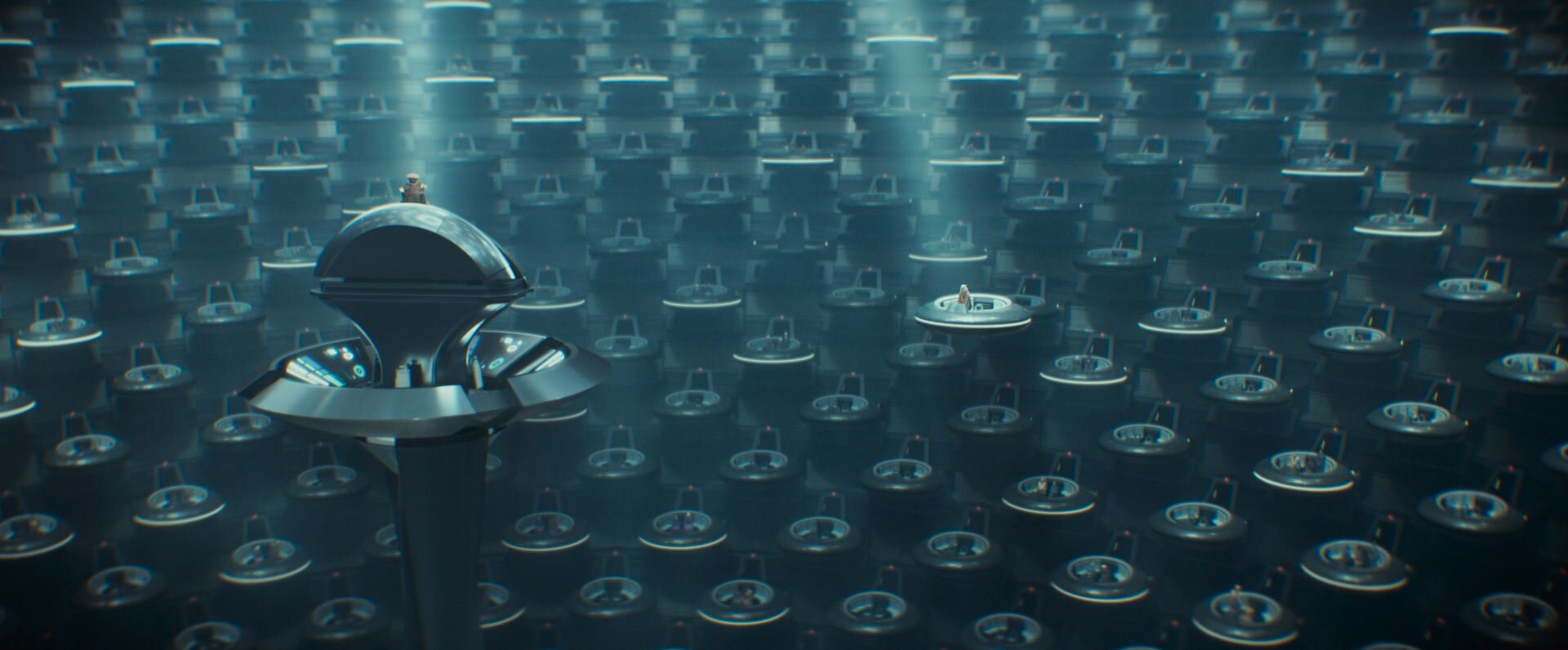
Much of the actual Senate chamber was a CG environment created by ILM. As TJ Falls explains, “We get to explore the different alien races…and the humans that are involved in the style and the look of that. It provides a really nice ability to showcase the Coruscant upper class. What becomes very tricky with that is how do you shoot that many elements and put it all together to build shots like that?” The ILM team would shoot a number of separate, live-action plates to ultimately composite together into a lifelike, believable Senate chamber.
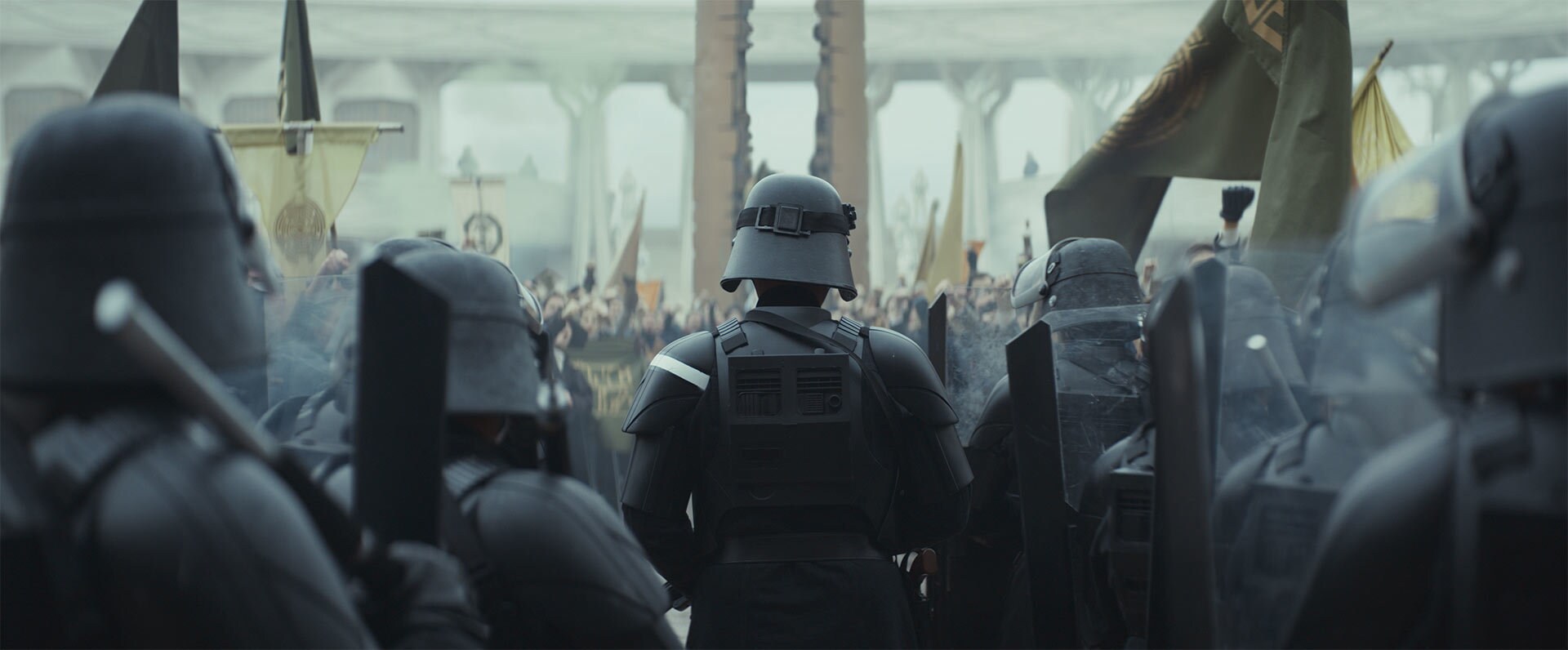
Staging a “harrowing event.”
The horrific massacre at Ghorman forms one of the emotional peaks of this episodic arc. “Why the Ghorman massacre? Why is it gonna happen?” Gilroy comments. “[We’re] ultimately leading to the Death Star…. In the first season you see this sort of destruction of Kenari which is the planet that Cassian comes from…. We watch the Empire steal Aldhani from the Aldhanis…. They don't know what's happening to them…. We watch Ferrix get destroyed as it rises up. We've seen three different Imperial takedowns…. I want to really explore what that kind of authoritarian power does. And I want to see a real takedown of some place [that’s politically] significant. And so we made Ghorman into this very significant place. It manufactures. It's a very successful planet.”
Hull explains that the massive backlot set at Pinewood Studios “was conceived quite early on to be where we stage the brutal put-down of Ghorman protest by the Empire. It had to feel both the central, cultural hub of the city, with a sense of their history, and become an arena to trap the local population during the massacre.”
According to Gilroy, the production demands for the Ghorman massacre was “another 100% on top of” the climactic uprising on Ferrix in Season 1. It took more than a month to film on the massive backlot set at Pinewood Studios, often in very cold temperatures. “That started at the beginning with having a lot of people defrosting the floor,” says executive producer Sanne Wohlenberg, “because it was an ice rink when we arrived there at 6:30 in the morning.”
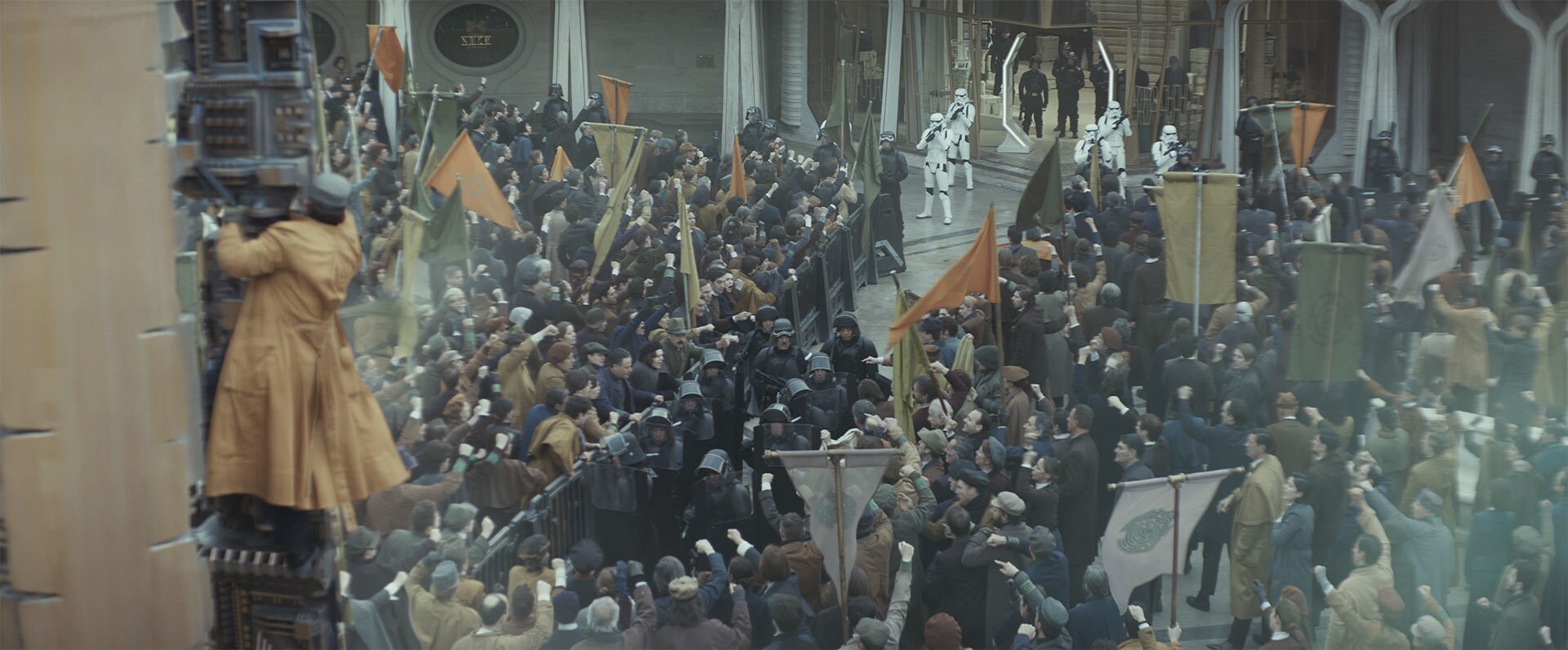

The elaborate shoot involved anywhere from 50 to 300 extras with multiple cameras shooting coverage. “It’s really about splitting them up to utilize every minute of every day to deliver this very complex and very technical spectacle that is emotionally really so important,” Wohlenberg notes. “I can't tell you how many elements [were involved]. There’s the national anthem that [composer] Nick Britell wrote that he taught all our supporting artists and actors to sing. There are KX units being let loose which are huge challenges for stunts and with the help of special effects, of course…. It's a clever and amazing team that we are blessed with.”
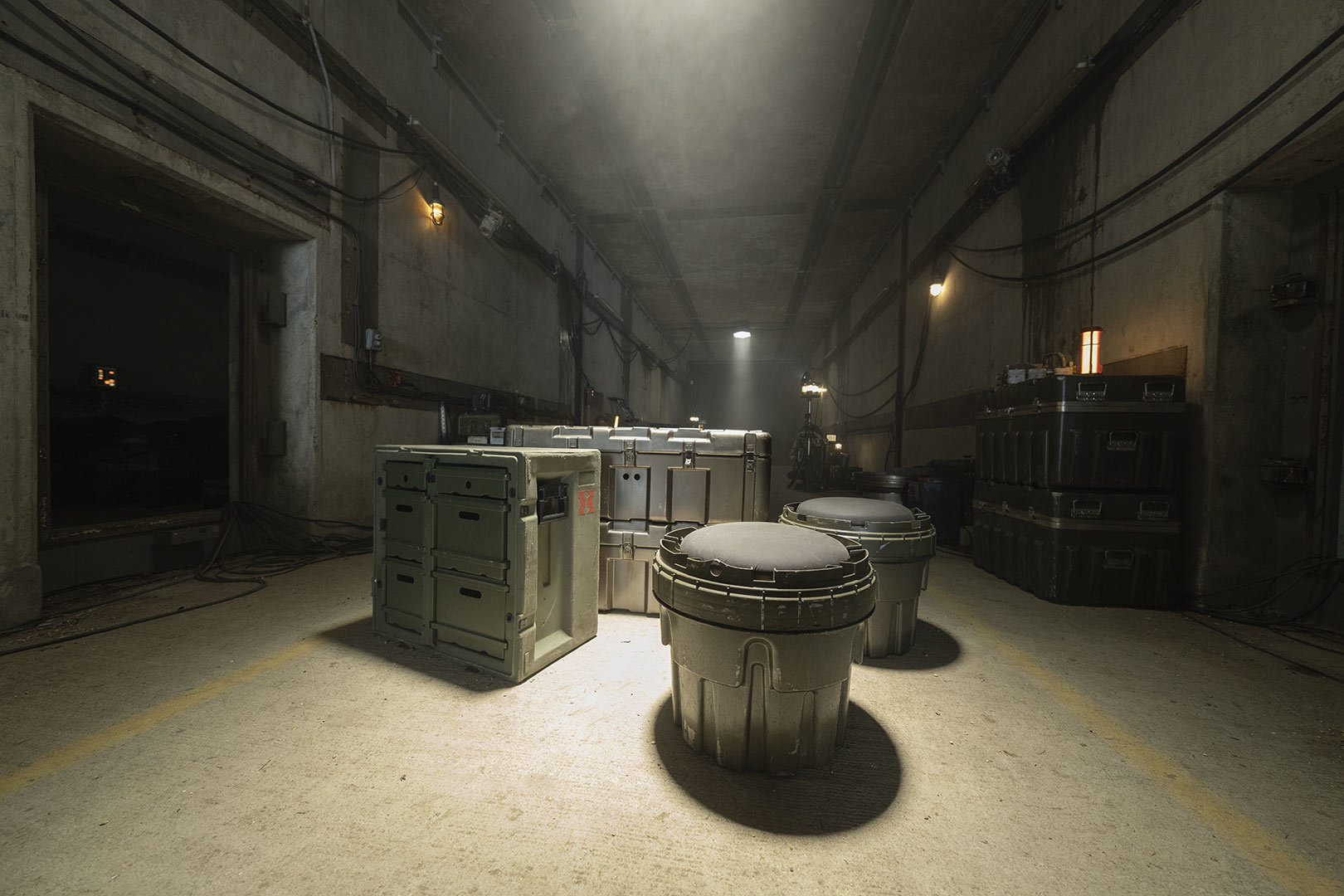
A familiar planet ringed with…potatoes?
In Andor Season 2’s second arc of episodes — all directed by Ariel Kleiman and written by Beau Willimon — Wilmon Paak is sent to aid the rebel contingent led by Saw Gerrera (Forest Whitaker). Their current hideout is a familiar spot: the grass-covered bunkers of D’Qar, an asteroid-ringed planet first seen as a resistance base in Star Wars: The Force Awakens (2015) and subsequently in Star Wars: The Last Jedi (2017). The same real-world location in England was used by the production, a World War II-era Royal Air Force base known as Greenham Common.
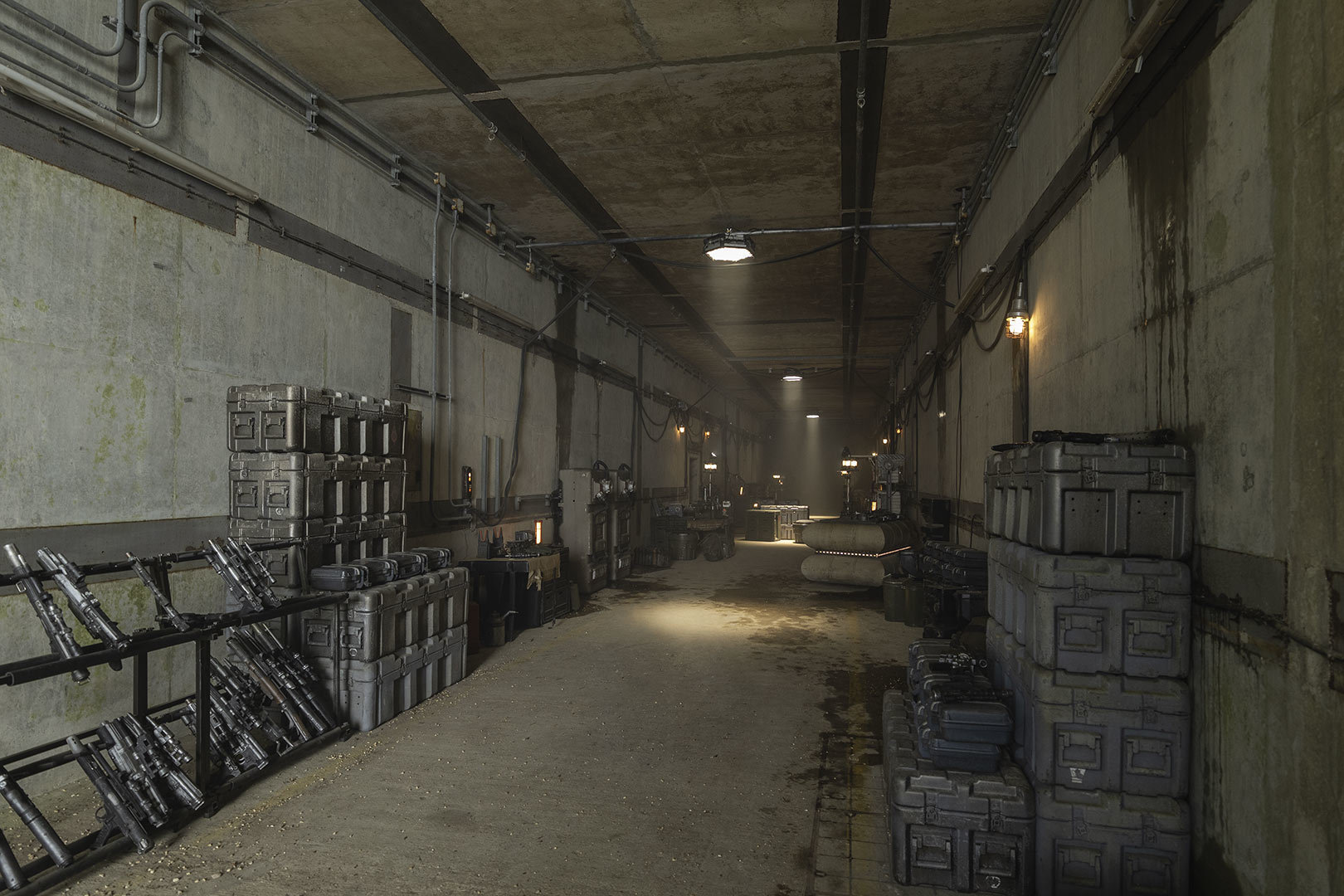
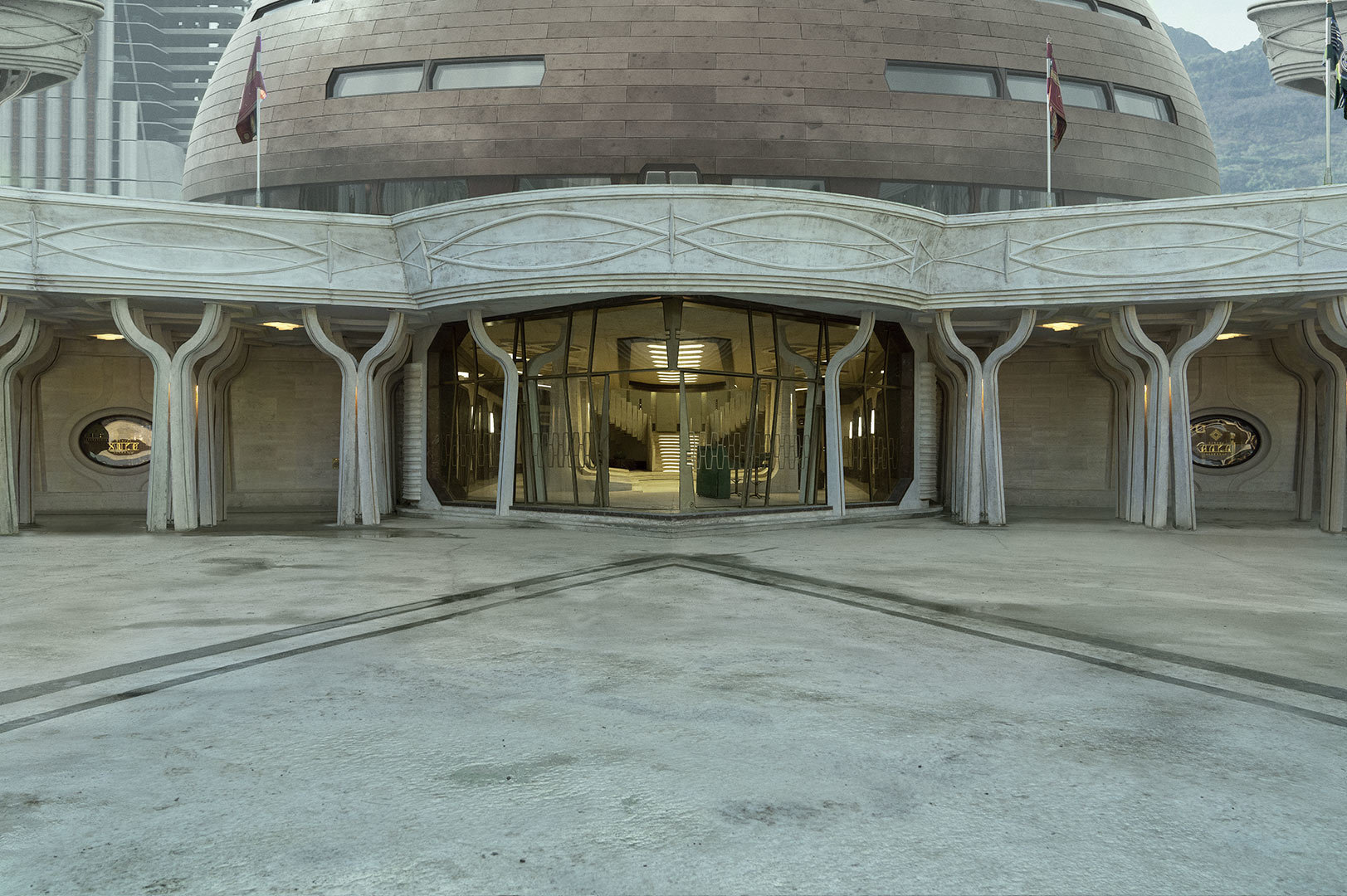
“It’s early on so it hasn't been fully built out. It's not actually a rebel base yet,” notes ILM visual effects producer TJ Falls. “It's simply this place where a band of folks have set up camp and have really done a rough and tumble. It's the same planet we see in the movies, but well before those movies. And so it just happened that that was the place that Saw gravitated towards and then packed up and left completely.”
For the views of D’Qar and its asteroid belt in space in Andor, a number of the same ILM crew who’d created similar elements for The Last Jedi were involved. And as visual effects supervisor Scott Pritchard explains, a special tribute was devised to honor ILM’s earlier work on Star Wars: The Empire Strikes Back (1980). “We had this idea of paying tribute to the original ILM modelmakers and in particular the asteroid chase in which for some of the background asteroids they used potatoes when they were filming the miniatures. So our environment supervisor Guy Williams got some potatoes and shot some camera footage of them and made CG versions. There are a few of them in the asteroid field around D’Qar.
Ghorman was Andor Season 2’s largest practical set.
In a production dominated by practical construction and location shooting, Ghorman became Season 2’s largest custom-built set, similar to Season 1’s Ferrix in scope and scale. “We decided that we should focus our efforts on building the plaza in Ghorman on the backlot here at Pinewood,” explains production designer Luke Hull, “which then grew into the plaza and many versions of streets and streets off of streets. So that quickly filled the backlot there.”
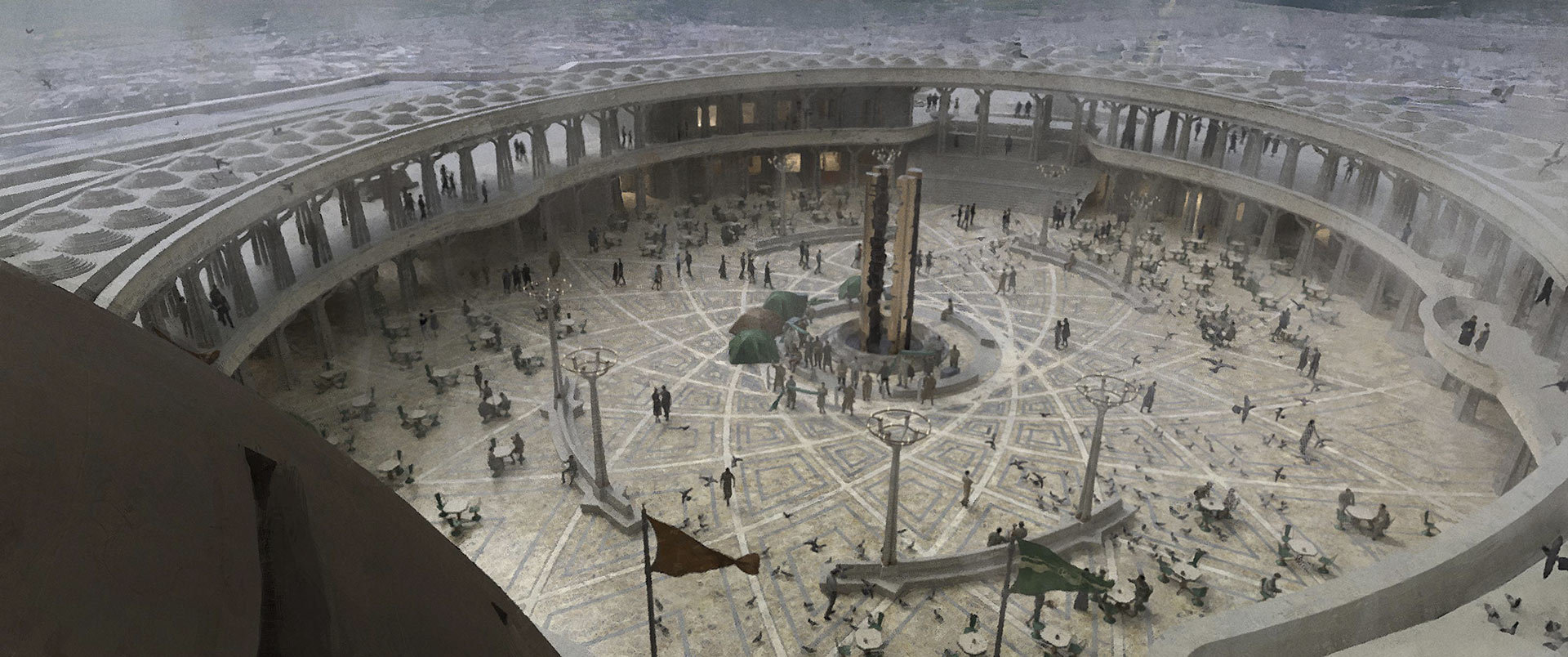
“Ghorman is a really fun challenge because it's a type of city that we haven't really seen very much in Star Wars before,” says visual effects supervisor Mohen Leo. “Star Wars often tends to do either small rural towns, or if they are big cities, then they're futuristic, big cities. And Ghorman is a big city, but it has history like this…rich tradition and culture that has been there for hundreds of years. It’s influenced by places in Italy like Milan, Turin, this sort of affluent, proud textile culture.”
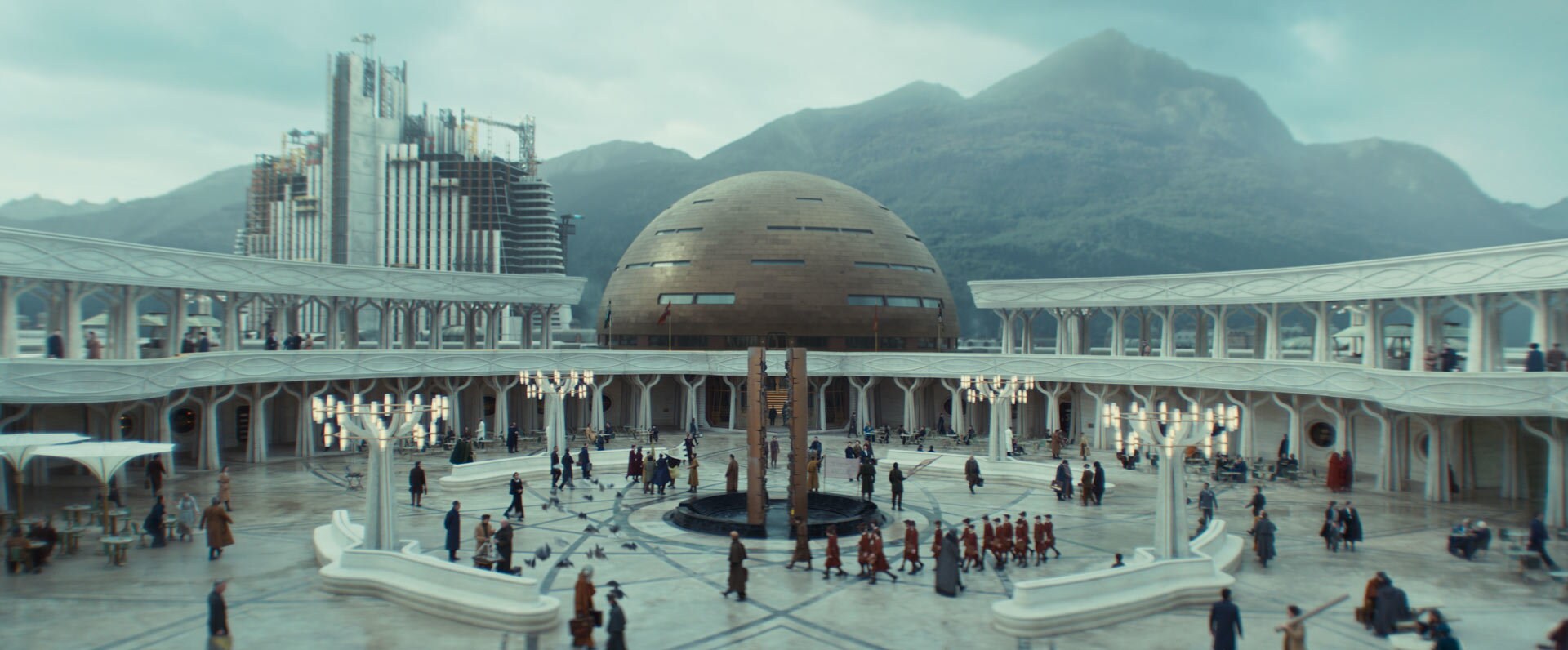
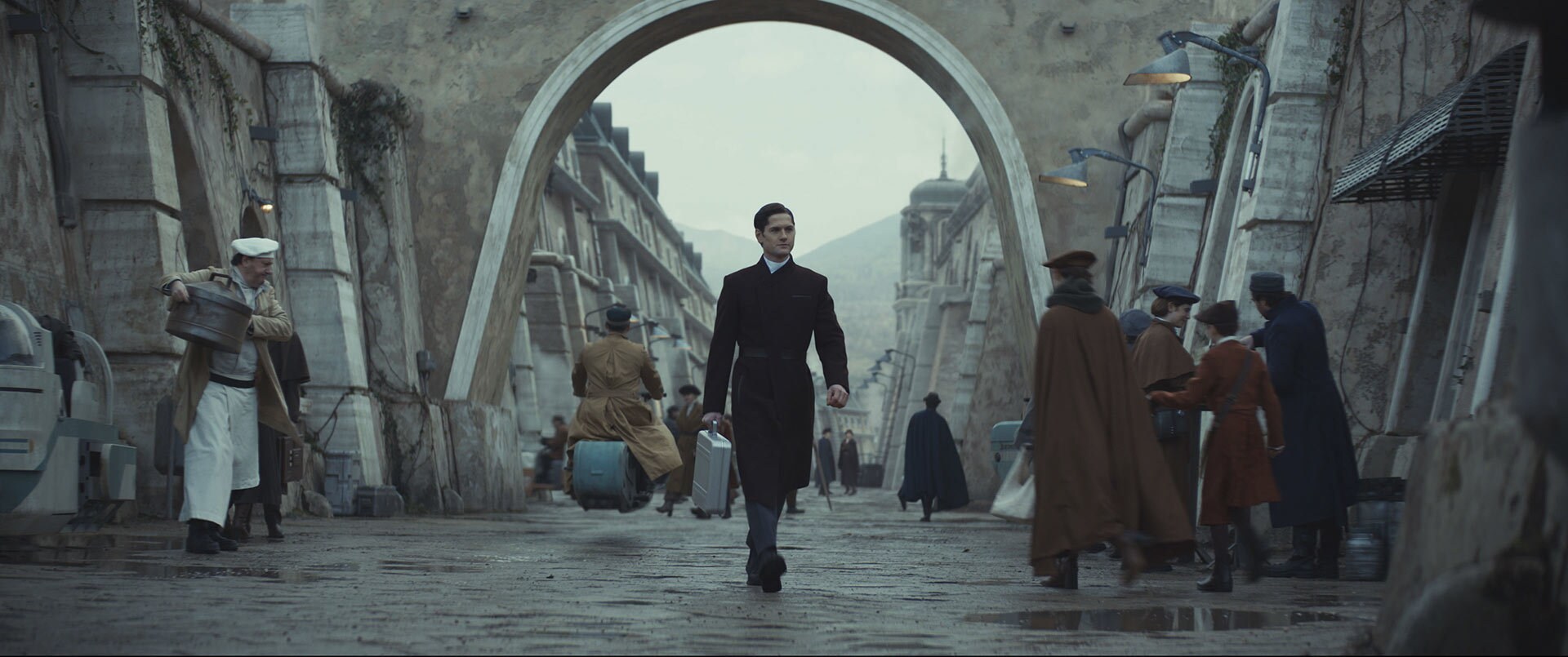
For Hull, Ghorman is his proudest achievement in Season 2. The central plaza in Palmo had to serve multiple functions with different locations within the same larger set. “It had interiors as part of the plaza like the Ghorman hotel lobby, the café, and the IOC lobby,” Hull explains, “which were all built as one composite so that action could flow freely between these spaces and give everyone a strong sense of geography.”

Leo adds that “Luke and his team did a really nice job of infusing everything in Ghorman with this sort of European, rich, upscale aesthetic and really contrasting that with the sort of brutalist Imperial look. The Empire is building this brutalist new headquarters building right off the main plaza. So, the set that was built on the back lot is this opulent central square, and then digitally what we're adding in post is this construction site looming over it.”
Other digital artistry was included very early in the process, as the art department and ILM team collaborated using virtual environments to plan shots. “On Season 2 we had more previs and were able to walk through and plan shots in the models of our sets as a whole team, which really helped,” says Hull. “It was really useful for the director and cinematographer to be able to take the computer model of the sets in their correct geography and plan a sequence with Mohen & TJ.”
To expand Ghorman’s setting beyond the practical set, the ILM crew shot aerial plates in Italy’s Lake Como, yet another location familiar to Star Wars fans as the lakeside retreat on Naboo in Star Wars: Attack of the Clones (2002).
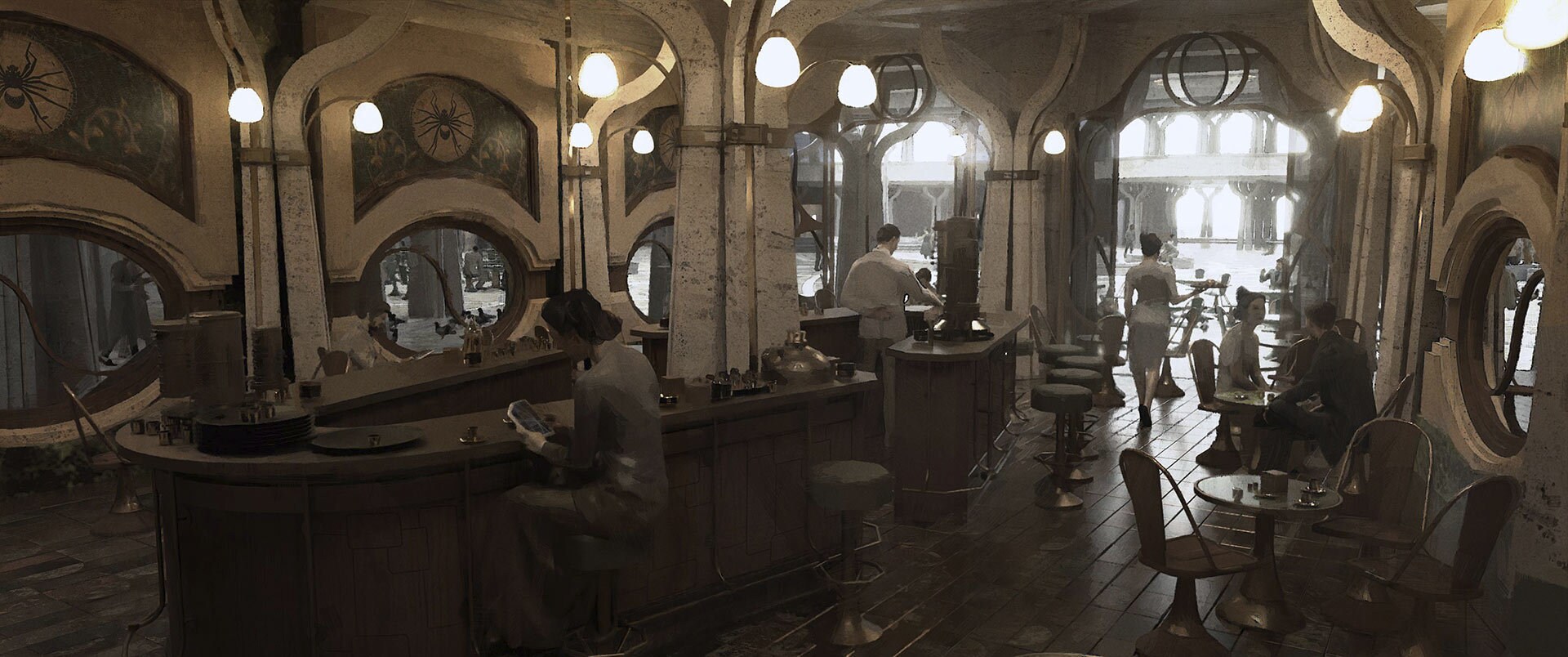
Not just world-building, but culture-building too.
Ghorman is rich not only in its historic architecture but its storied culture built from the weaving of precious webs harvested from the planet’s distinct spiders. Ghorman twill is purportedly the best in the galaxy, and as Andor creator and executive producer Tony Gilroy points out, even Emperor Palpatine's black tunic is made from the coveted material.
“We built a whole Ghorman society,” Gilroy says. “It's not just building the physical part of it. It's building a culture…. We designed an entire aesthetic, and an entire language, and a cultural identity, and a national anthem, and a history…. The Ghormans are very proper people, their buyers come in all the time. Luthen sends Cassian there because to Luthen, as he says, the idea of Ghorman — comfortable, safe, wealthy Ghorman — becoming radicalized is just…that's heaven for him. That's everything that he wants.”
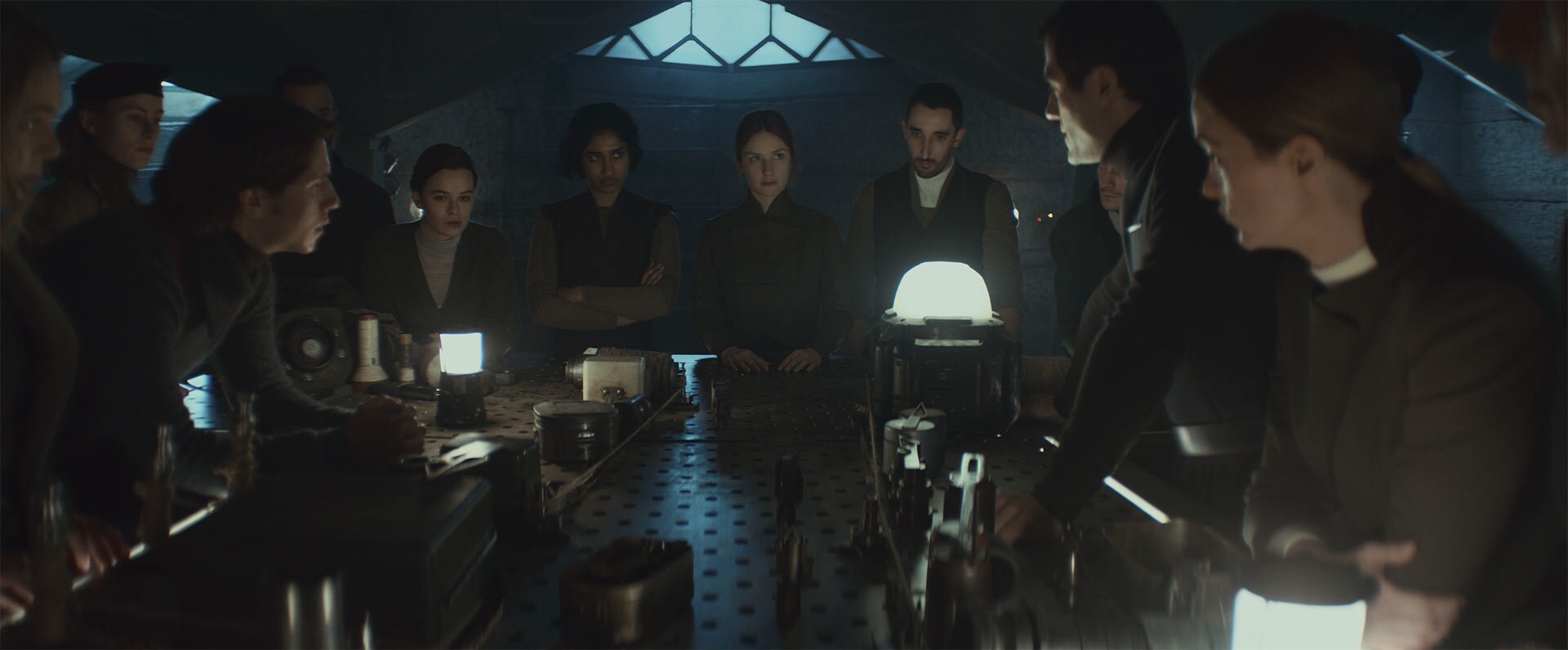
According to Hull, those story elements laid the groundwork for the ultimate design of Ghorman’s physical appearance. “Tony was keen to make their success in the galaxy be based in the manufacture of fine Ghorman twill weaved from the spiders native to the planet, and from that everything spawned,” the production designer explains. “The aesthetic morphed into an elegant, European, interwar vibe. The idea was to try and create a place that felt like it could really exist in the galaxy, but still feel fresh for Star Wars. You can feel the history of the Ghormans.”
The Empire is increasing its presence on Ghorman for reasons known only by a select few under the command of Director Orson Krennic (Ben Mendelsohn). An underground resistance movement has formed in response. For the production team, every scene presents an opportunity to ground the storytelling in a rich context. For instance, Vel and Cinta’s meeting with the Resistance organizers is set in the basement of a “twillery” building.

“We designed the table as if it had been part of the manufacturing of the Ghorman silk fabric,” notes set decorator Rebecca Alleway. “The pieces in there were [from] old machinery that made the twill. Obviously, they didn't exist and my brilliant buying team, Corina [Floyd] and Helen [Player], sourced amazing bits of equipment and kit. And Tim [Wildgoose], my amazing HOD prop maker, put them together…. That was a fun set because even though you never saw it as the twillery, we had to say that they've taken this as their secret headquarters. We kind of made this whole backstory.”
Does that jungle look familiar?
Having stolen a TIE Avenger prototype from a Sienar Fleet Systems test facility, Cassian Andor (Diego Luna) manages to (barely) fly the ship to a rendezvous point in a dense jungle. His partner, however, is missing, and ironically Cassian is taken captive by a squabbling group of Rebels, a cell that doesn’t know Andor and find themselves stranded on this unknown world. It’s only after the group is attacked by a Yavinian doodar that Cassian is able to escape aboard his ship, and in the wide shot of the Avenger flying away, we see a familiar group of Massassi temples. This is Yavin 4. The structures first appeared in Star Wars: A New Hope (1977) and were last seen as recently as Rogue One: A Star Wars Story (2016), but how the Rebel Alliance managed to establish a secret base there remains a mystery.
“The origin of Yavin is up for grabs,” says Gilroy in reference to the larger canon of Star Wars storytelling. “You spend two episodes there and you don't realize until [Cassian] escapes that the jungle that he's been in…is undeveloped Yavin. It's raw Yavin.”

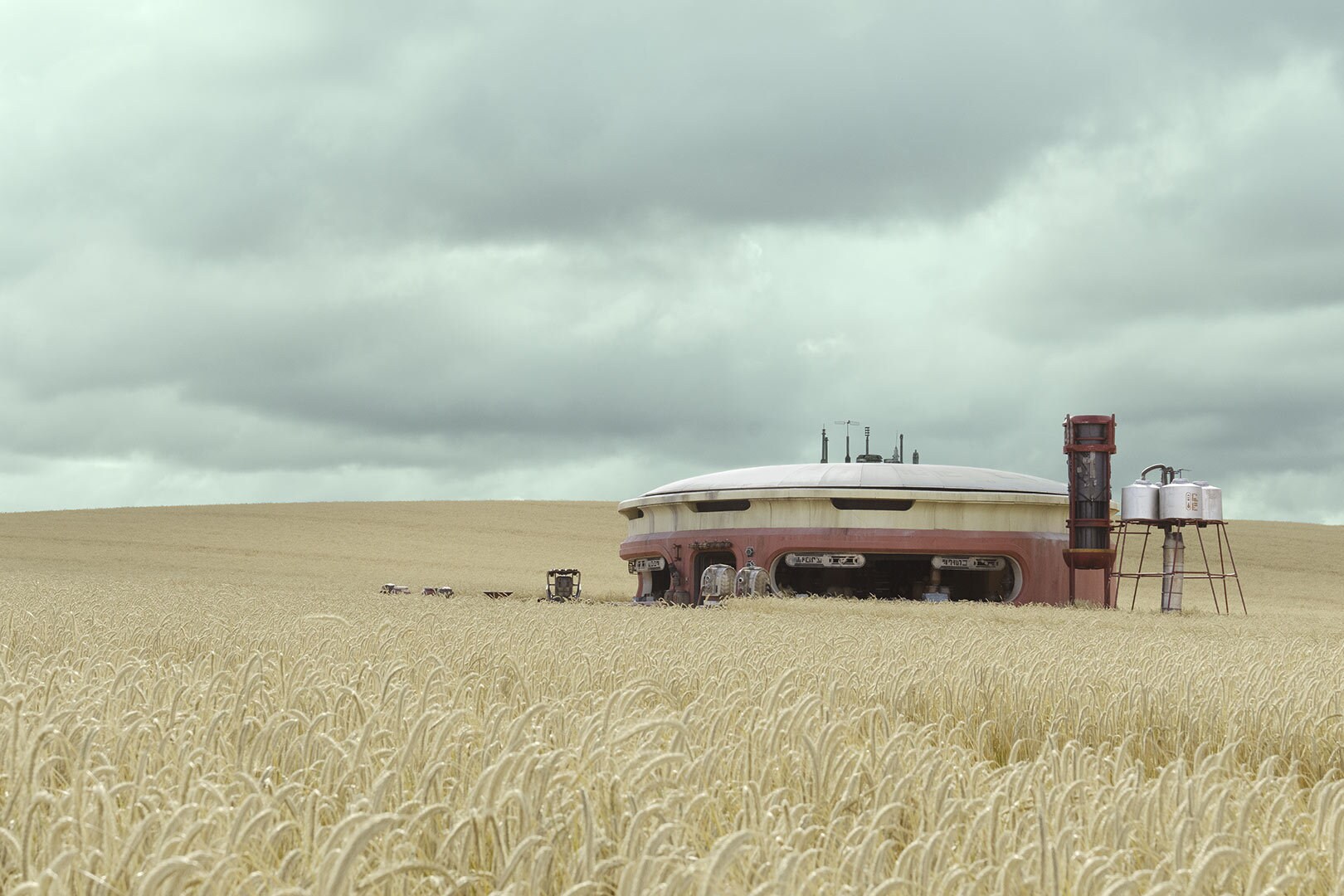
Unusual for a TIE Fighter, Hull’s art department built a full-scale, practical ship for use while filming on set. “The ship itself had to do a lot, so it seemed obvious from the start we should build a full interior [and] exterior ship,” the production designer explains. The construction “comes apart in three pieces and gets transported around and goes to the Yavin clearing.” Leo adds that “it's one of those things you normally don't see as a full, real set. You could actually walk inside and sit in the cockpit.”
They planted a field, and then moved it.
A new planet for Star Wars viewers, Mina-Rau has become the home (and hiding place) for Cassian, Bix Caleen (Adria Arjona), Brasso (Joplin Sibtain), Wilmon Paak (Muhannad Bhaier), and of course, the droid B2EMO. “I wanted to get some sunshine in the show and some bright sunlight,” Gilroy says of the world’s creative spark, which also served to answer a basic question about resources in the galaxy. “Where does all the food come from for Coruscant? They've been cast out of a community that they really care about, and they found a new place to be, and it's sunny and it's wonderful, and it's going to be taken away from them.”
Like Ferrix, it's a world with a tight communal bond built on a local economy that requires hard labor. As Luke Hull notes, “the whole planet's been terraformed to grow one type of crop to feed the Empire…. [Whether] the people are on the run or [were] born there, they all live in these kind of communes [and] get a certain area of land to farm and manage…but the grain goes off world.”
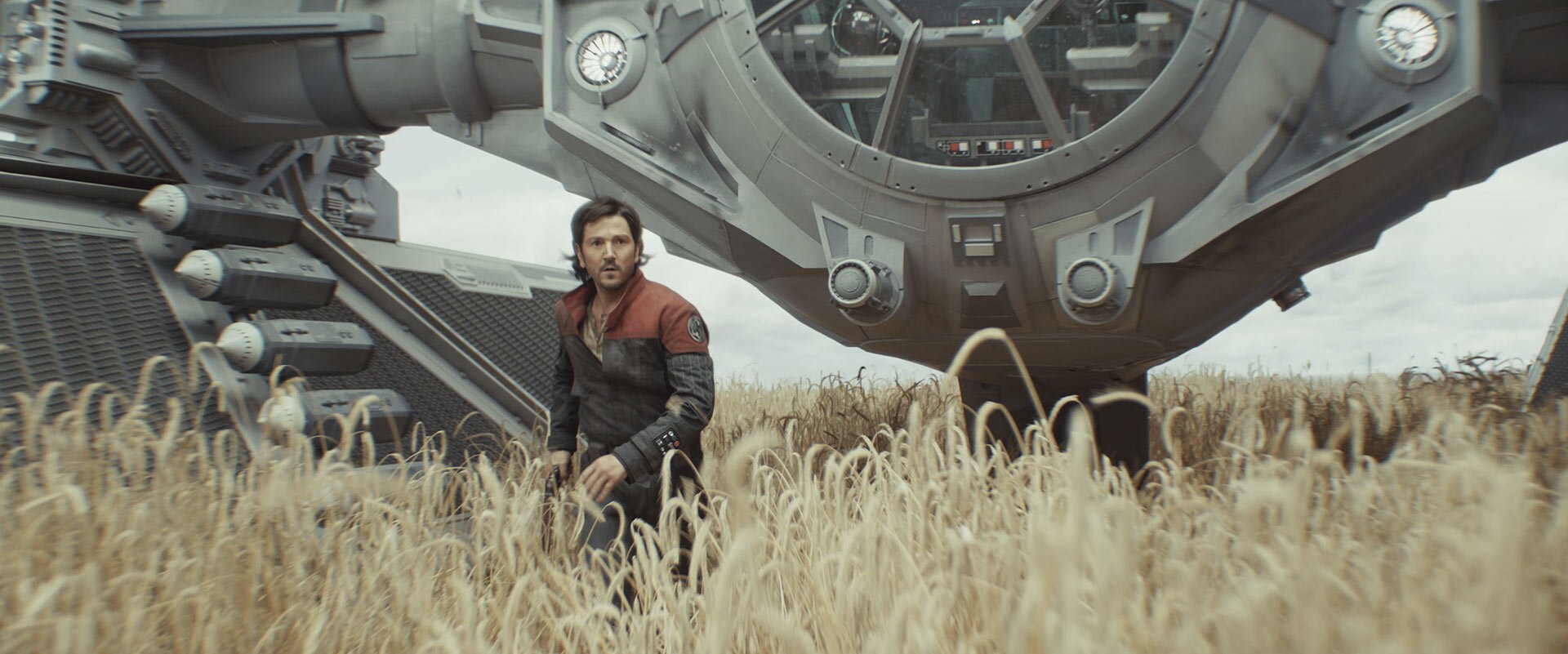
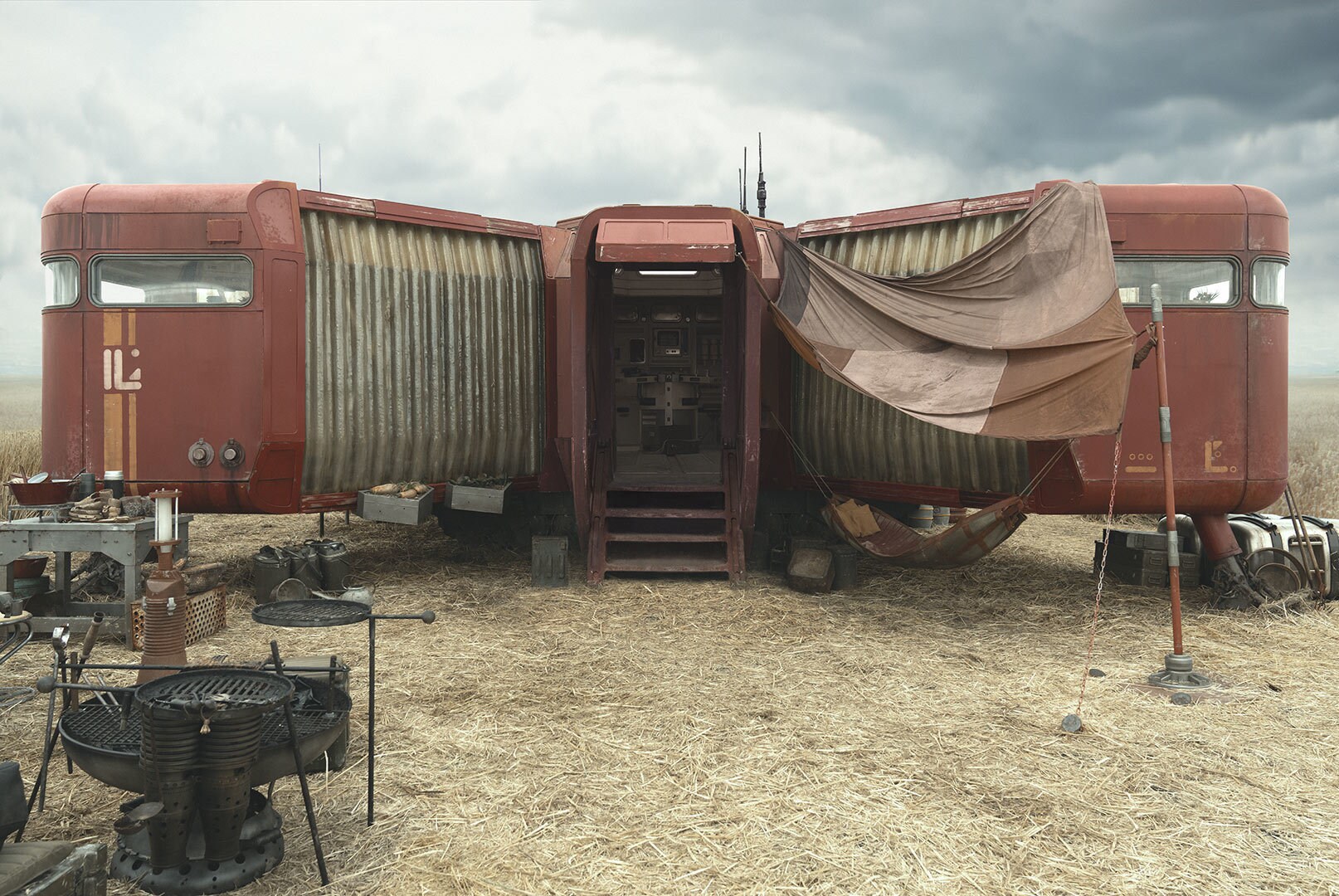
Hull was responsible for selecting the type of crop that would be grown on Mina-Rau, eventually settling on a variety of ancient rye grain that could be sowed in England. “Somehow we found a farmer and convinced them to grow that instead of wheat that year across their field,” the production designer explains. “Rich Hill, location manager, found a very good field, actually, not too far from the studios. It gave us great…horizon lines because obviously it had to look vast. We had to extend all this in post as well.”
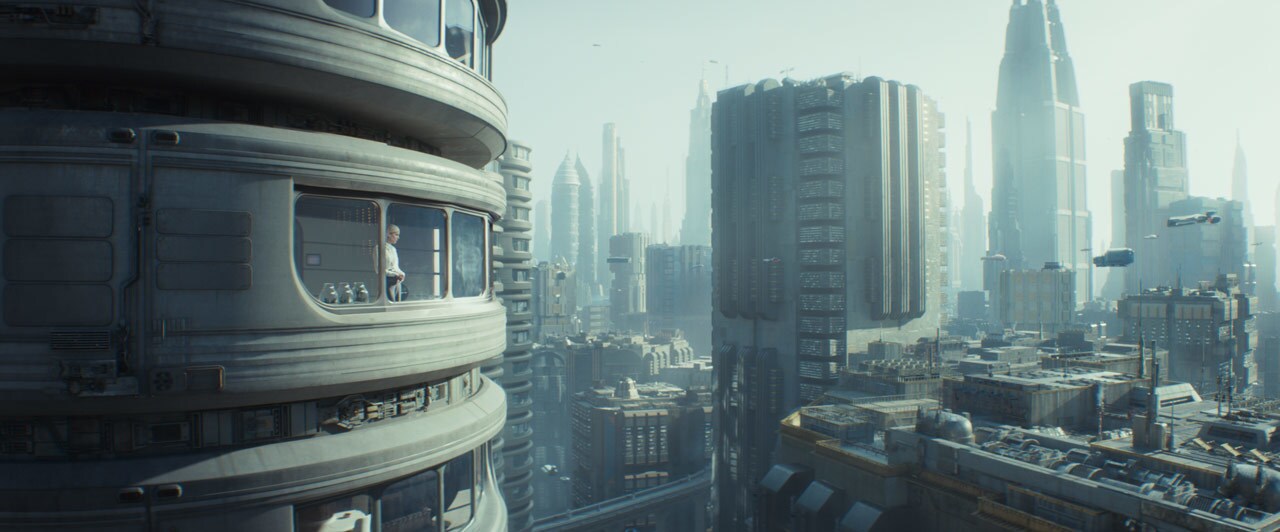
The production crew built the complete set of the mobile home and assorted equipment in the rye field, located near the small village of Watlington in Oxfordshire. Before the main unit shoot took place, however, the SAG-AFTRA strike began in the summer of 2023. That didn’t stop the field from continuing to grow. The production greens department had to improvise, cutting sections of grain out of the field and preserving them within a soundstage at Pinewood Studios. The various set-pieces were then moved, as the scenes weren’t completed until the last week of shooting in early 2024.
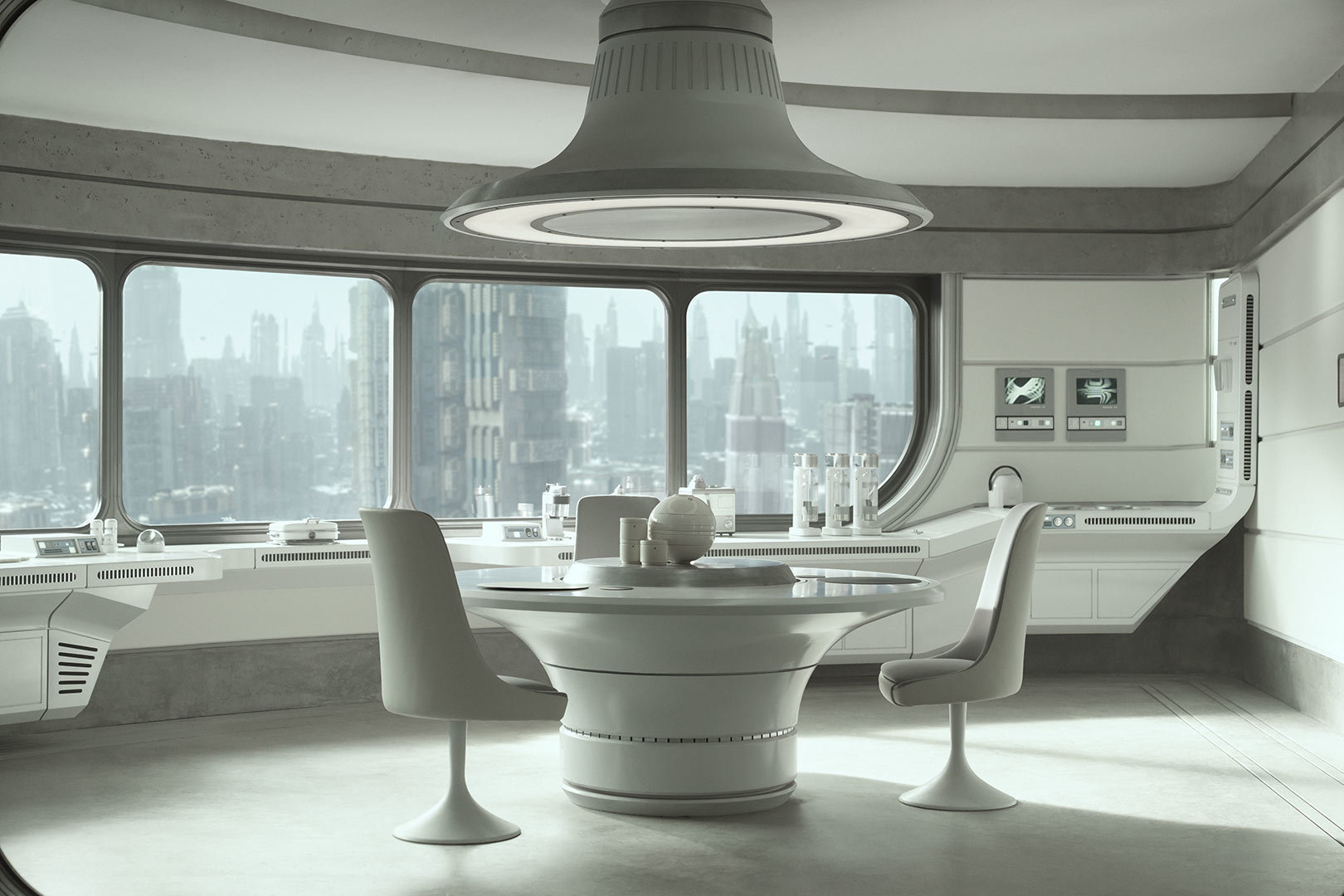
Star Wars at home….
An important aspect of Andor’s storytelling are its elements of everyday domestic life. We’ve seen hints of this in past stories, such as the meal scenes in A New Hope or Star Wars: The Phantom Menace (1999), but Andor integrates these mundane yet authentic qualities on a more elaborate scale. We’ve seen Coruscant many times before, but in this series we go into housing blocks, stores, and office spaces. Episode 2 depicts another one of these locales: Dedra Meero’s (Denise Gough) palatial yet stark high-rise apartment, which she now shares with none other than Syril Karn (Kyle Soller).
“Tony's writing is so different from anything that's been done in Star Wars before,” explains set decorator Rebecca Alleway. “To have the chance to take it further, and to develop characters, to develop their worlds, their houses where they lived…. I remember being so excited designing my first Star Wars kitchen…. It was such a great challenge. [We] always go back to what Star Wars is, looking at all the original references, and then drawing on character…. It meant that we just had to be really creative and find new ways of enabling us to make these sets look cluttered and real and characterful, but not in the usual way.”
Property master Ben Wilkinson adds that home economists Katharine Tidy and Olivia Somary had their hands full creating various foods required for the season, including the “fondue, but with this kind of weird, jelly-like bug” that Syril’s mother, Eedy Karn (Kathryn Hunter), eats when she makes her awkward visit to the apartment.

A traditional highland wedding.
Because it was produced during the global pandemic, Andor’s first season did not include elaborate location shoots in countries outside of the United Kingdom. That changed with Season 2. Chandrila has existed for many decades in the Star Wars canon as Mon Mothma’s (Genevieve O’Reilly) homeworld, but it had never been visually depicted in a cinematic story. “You really just go on a journey to imagine where Mon Mothma and the Chandrilans come from,” comments executive producer Sanne Wohlenberg. “You always look for something new and fresh in the world of Star Wars.”
The Mothma estate is located in a mountainous region. With its distinct, pinnacled formations, the Montserrat range to the northwest of Barcelona, Spain, was ultimately chosen as the real-world shooting location. The ceremonial walk that takes place before the wedding of Leida Mothma (Bronte Carmichael) and Stekan Sculdun (Finley Glasgow) was shot on location there while the various estate interiors were created back at Pinewood. “It's just like a perfect Star Wars landscape,” comments Hull. “It's soft rocks that don't seem real or are not very common across the world.”
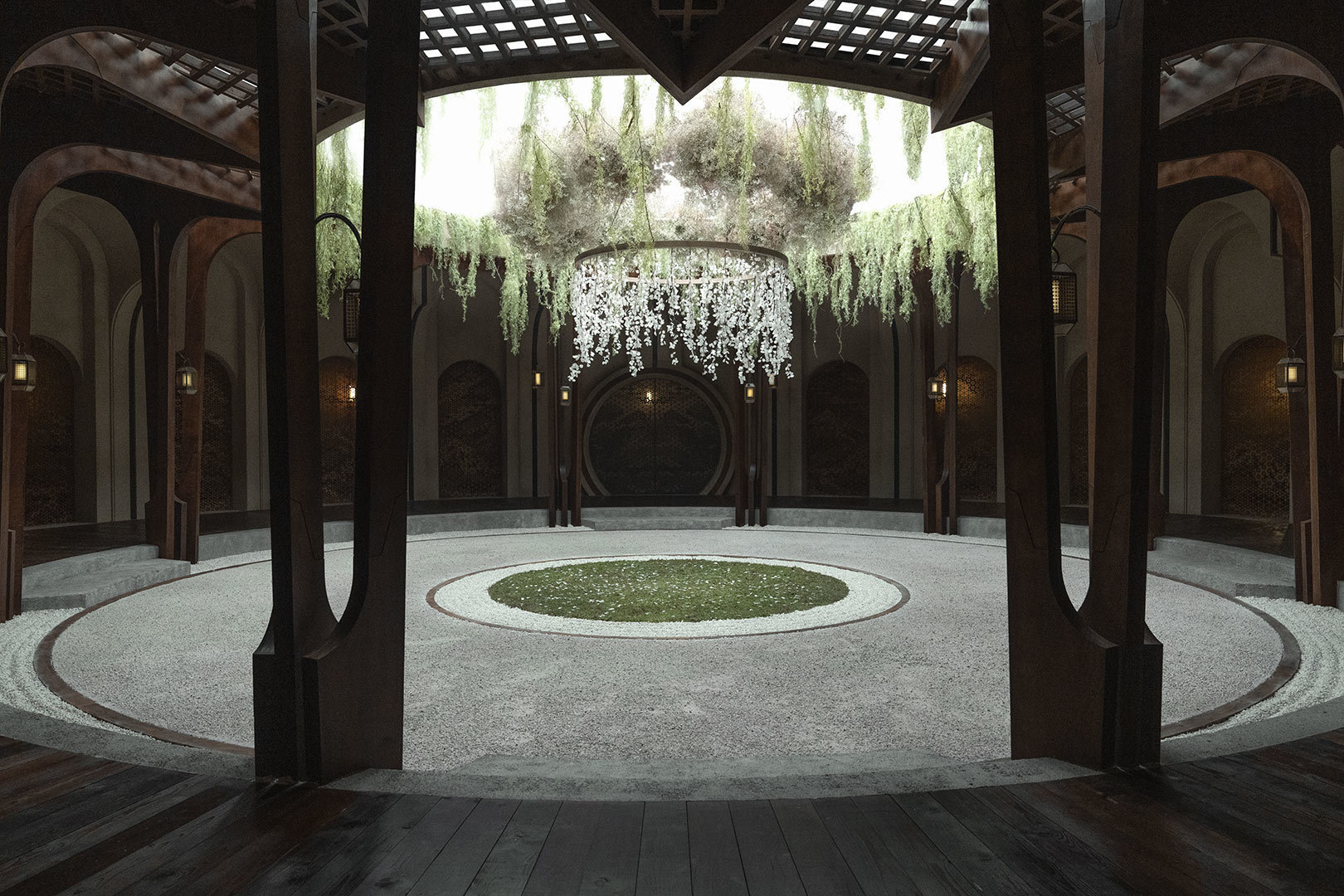
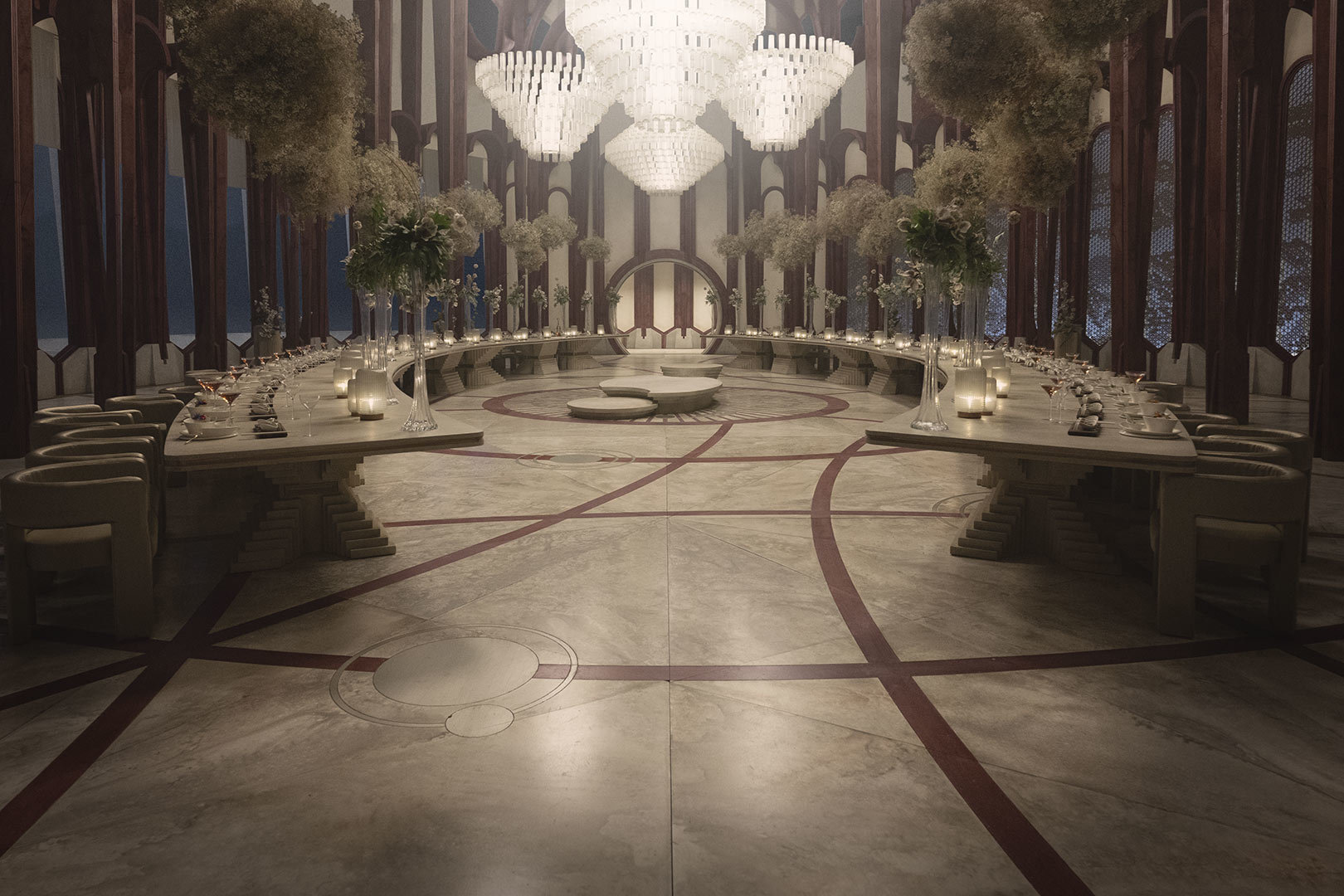
For the estate’s design, Hull and the art department researched an unusual blend of historic Japanese stone castles and minimalist, nature-infused architecture from Scandinavia. The ballroom where the memorable wedding dance takes place included a stone floor that featured a unique, celestial map. “I always felt that the best thing with the Chandrilans was that they were proud about their place in the universe,” notes Hull. “So, the idea was that the floor is like a star map of their position within the galaxy, which we did a slightly smaller version of in Coruscant [at the Chandrilan embassy]. The dance became the main focus, I think, for Tony and everyone. That ballroom becomes more like an arena really for a lot of people's interactions.”
To decorate the wedding, Alleway took her lead from work she’d done previously for the Chandrilan embassy in Season 1. “Ikebana is the art of Japanese flower making,” she explains. “So I knew that if Mon was doing flowers for her daughter's wedding, it would be like the Ikebana flowers in the embassy. So, I immersed myself in that.”
As Wohlenberg summarizes, the opportunity to create aspects of Chandrilan culture and tradition can mean lots of interesting surprises and insights into the emotions of the characters. “How you clink your glasses when your speech is happening, how you applaud, how [they do] all those things, and how they dance is what makes it slightly extraterrestrial,” she says. “I think the big surprise that Tony kind of incredibly and so beautifully [imagined for] Mon Mothma's journey [is that the] very elegant and civilized Chandrilans actually let their hair down when it comes to a wedding. It was a world up for grabs and I think we took it.”






